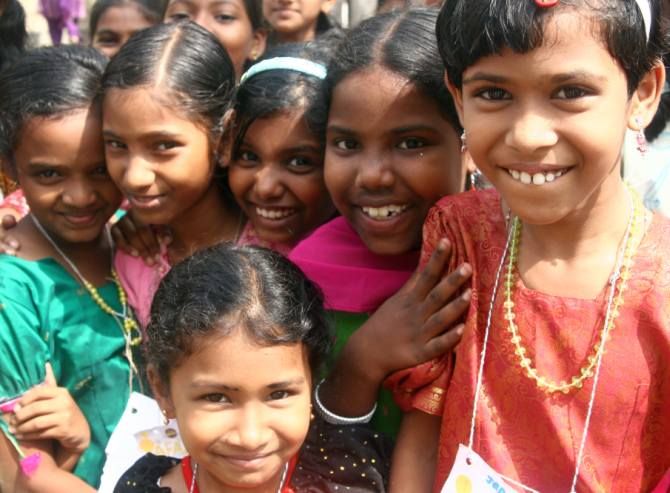 | « Back to article | Print this article |
The Sukanya Samriddhi Scheme was launched in January this year under the Prime Minister's Beti Bachao, Beti Padhao programme, and is aimed towards savings for girl child. While this got relief under Section 80C earlier, the current budget has deemed that income from this scheme will also be tax free.

Photograph: Elton Lin/Creative Commons
Let us look at this scheme a little more in detail.
The scheme was started to benefit the girl child, and as such is applicable only for those who have a girl child below the age of 10 years (with the caveat that one can invest under this scheme even if the girl turns 11 by December 1, 2015).
Also, it is important to note that the account will be in the name of the child, and a maximum of two accounts per family can be opened.
Most public sector banks and post offices will have application forms for this, and there are very few KYC norms to be followed (example: Child’s birth certificate, address and ID proof of parents, etc.). There are however some strict rules when it comes to the investment per se. One can invest up to Rs 1.5 lakh in the scheme, and if one has two daughters (and hence two accounts), this Rs 1.5 lakh is the combined cap across the accounts (meaning it is the cap per family).
Also, the minimum payment has to be Rs 1,000 per year, with the term of the investment being 14 years -- with an option of partial withdrawal (50 per cent) for the marriage of the girl post attaining 18 years of age. The account matures when the girl reaches the age of 21, while the operation of the account can be done by the child herself after she becomes 10 years old.
The pros and cons
The parent gets the 80C benefit for up to Rs 1.5 lakh (but will be unable to avail benefits under this section for any other investments done). Apart from this, the income from this scheme will be tax free during the time of redemption. The interest rate is currently 9.1 per cent, and will be announced every year -- similar to the EPF scheme.
This scheme was developed with a specific agenda in mind, and unlike the PPF its time frames and mode of working are with this in mind -- meaning that the redemption is to be done at a time when the money is required, either for higher education or for marriage. However, given that this is going to be a debt-based instrument, and the interest rate announced is 9.1 per cent, if one invests Rs 1.5 lakh in this investment avenue from the time their child is 10 years old, for 11 years till she turns 21, the corpus is likely to become around Rs 29 lakh (assuming interest rate remains the same) -- meaning that this may not cover the cost of even a foreign education at that time, and one can look at this scheme to supplement any additional investments done for their child.
A few other points to be kept in mind are that, similar to a provident fund, this can be transferred across the country where one is relocated, and if the minimum investment is not done, a fine of Rs 50 per year will be levied on the account. Also, the interest can be compounded on a monthly or yearly basis, depending on your choice.
One more aspect to keep in mind is that the money can be deposited only for 14 years, but the life of the scheme is for 21 years, meaning that the interest will compound on the principal for 7 more years after the tenure ends. Premature withdrawal is allowed if the girl has passed 18 years of age and is married.
Keeping all the factors in mind, this is likely to be one of the better investment options for your child -- especially if your little girl is under 10 years.
Summary

Anil Rego is the founder and CEO of Right Horizons, an investment advisory and wealth management firm that focuses on providing financial solutions that are specific to customer needs.